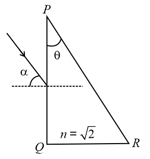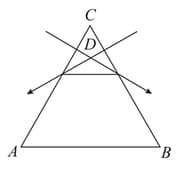EASY
Earn 100
A light ray through a glass prism of angle under goes a minimum deviation of . What is the speed of light in the prism?
(Assume speed of light in air)
(a)
(b)
(c)
(d)
50% studentsanswered this correctly
Important Questions on Ray Optics
MEDIUM
EASY
EASY
HARD

EASY
EASY
MEDIUM
MEDIUM
EASY
MEDIUM
EASY

EASY
EASY
EASY
EASY
EASY
EASY
MEDIUM


